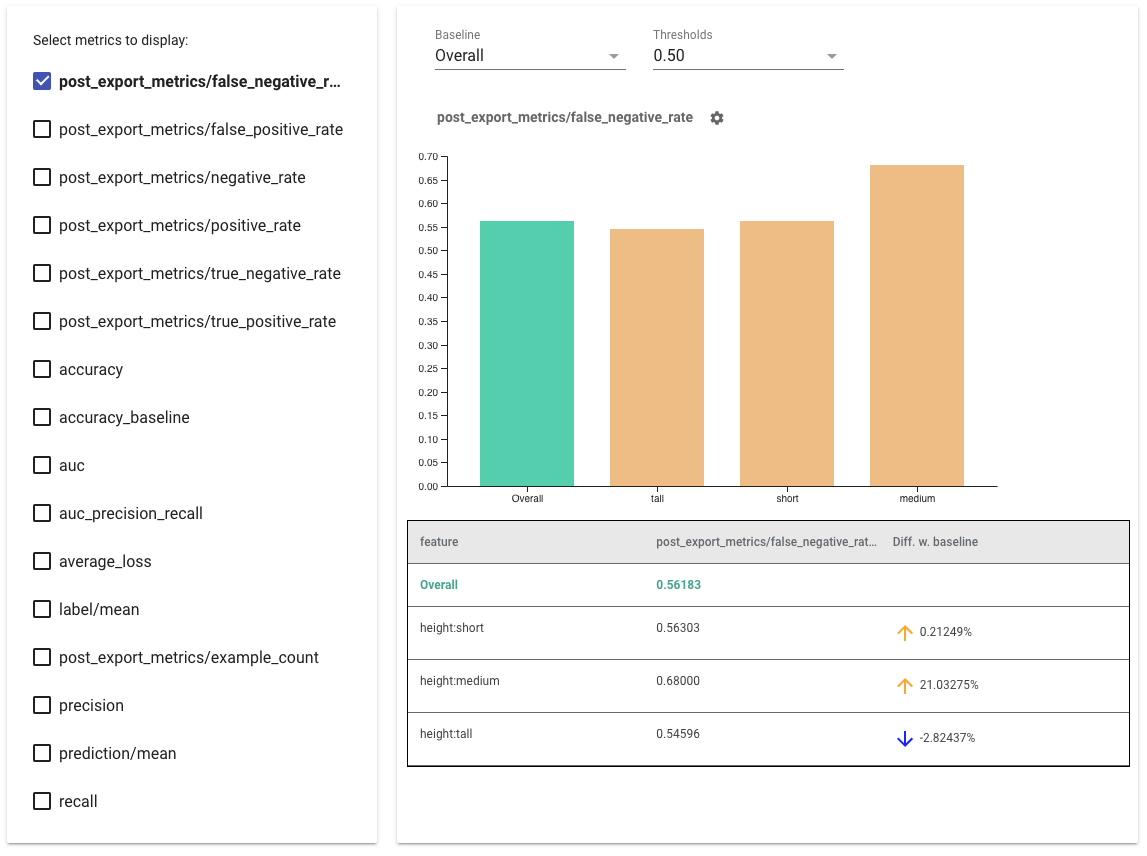Fairness Indicators is designed to support teams in evaluating, improving, and comparing models for fairness concerns in partnership with the broader Tensorflow toolkit.
The tool is currently actively used internally by many of our products, and is now available in BETA for you to try for your own use cases. We would love to partner with you to understand where Fairness Indicators is most useful, and where added functionality would be valuable. Please reach out at tfx@tensorflow.org. You can provide any feedback on your experience, and feature requests, here.
- Introductory Video
- Fairness Indicators Case Study
- Fairness Indicators Example Colab
- Fairness Indicators: Thinking about Fairness Evaluation
Fairness Indicators enables easy computation of commonly-identified fairness metrics for binary and multiclass classifiers.
Many existing tools for evaluating fairness concerns don’t work well on large scale datasets and models. At Google, it is important for us to have tools that can work on billion-user systems. Fairness Indicators will allow you to evaluate across any size of use case.
In particular, Fairness Indicators includes the ability to:
- Evaluate the distribution of datasets
- Evaluate model performance, sliced across defined groups of users
- Feel confident about your results with confidence intervals and evals at multiple thresholds
- Dive deep into individual slices to explore root causes and opportunities for improvement
This case study, complete with videos and programming exercises, of how Fairness Indicators can be used on one of our own products to evaluate fairness concerns over time.
The pip package download includes:
- Tensorflow Data Analysis (TFDV) [analyze distribution of your dataset]
- Tensorflow Model Analysis (TFMA) [analyze model performance]
- Fairness Indicators [an addition to TFMA that adds fairness metrics and the ability to easily compare performance across slices]
- The What-If Tool (WIT) [an interactive visual interface designed to probe your models better]
Tensorflow Models
- Access Fairness Indicators as part of the Evaluator component in Tensorflow Extended [docs]
- Access Fairness Indicators in Tensorboard when evaluating other real-time metrics [docs]
Not using existing Tensorflow tools? No worries!
- Download the Fairness Indicators pip package, and use Tensorflow Model Analysis as a standalone tool [docs]
Non-Tensorflow Models
- Model Agnostic TFMA enables you to compute Fairness Indicators based on the output of any model [docs]
The examples directory contains several examples.
- Fairness_Indicators_Example_Colab.ipynb gives an overview of Fairness Indicators in TensorFlow Model Analysis and how to use it with a real dataset. This notebook also goes over TensorFlow Data Validation and What-If Tool, two tools for analyzing TensorFlow models that are packaged with Fairness Indicators.
- Fairness_Indicators_on_TF_Hub.ipynb demonstrates how to use Fairness Indicators to compare models trained on different text embeddings. This notebook uses text embeddings from TensorFlow Hub, TensorFlow's library to publish, discover, and reuse model components.
- Fairness_Indicators_TensorBoard_Plugin_Example_Colab.ipynb demonstrates how to visualize Fairness Indicators in TensorBoard.
For more information on how to think about fairness evaluation in the context of your use case, see this link.
If you have found a bug in Fairness Indicators, please file a GitHub issue with as much supporting information as you can provide.
